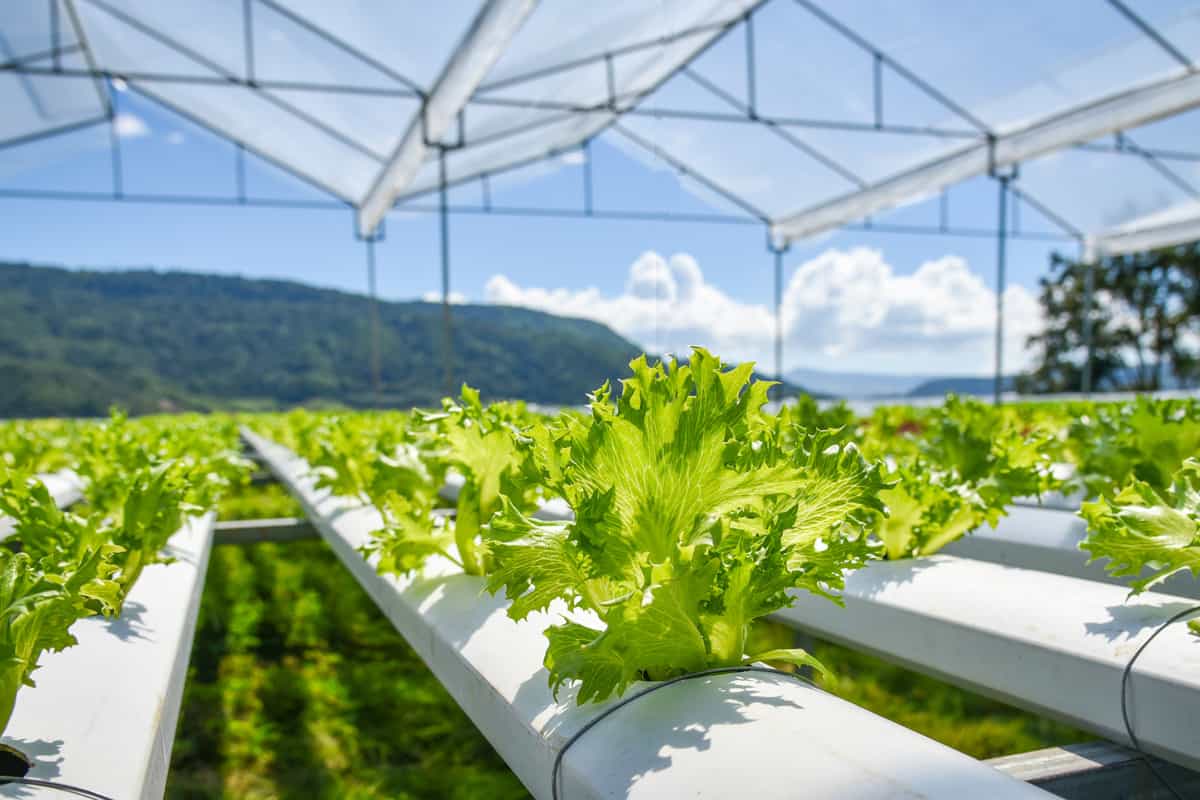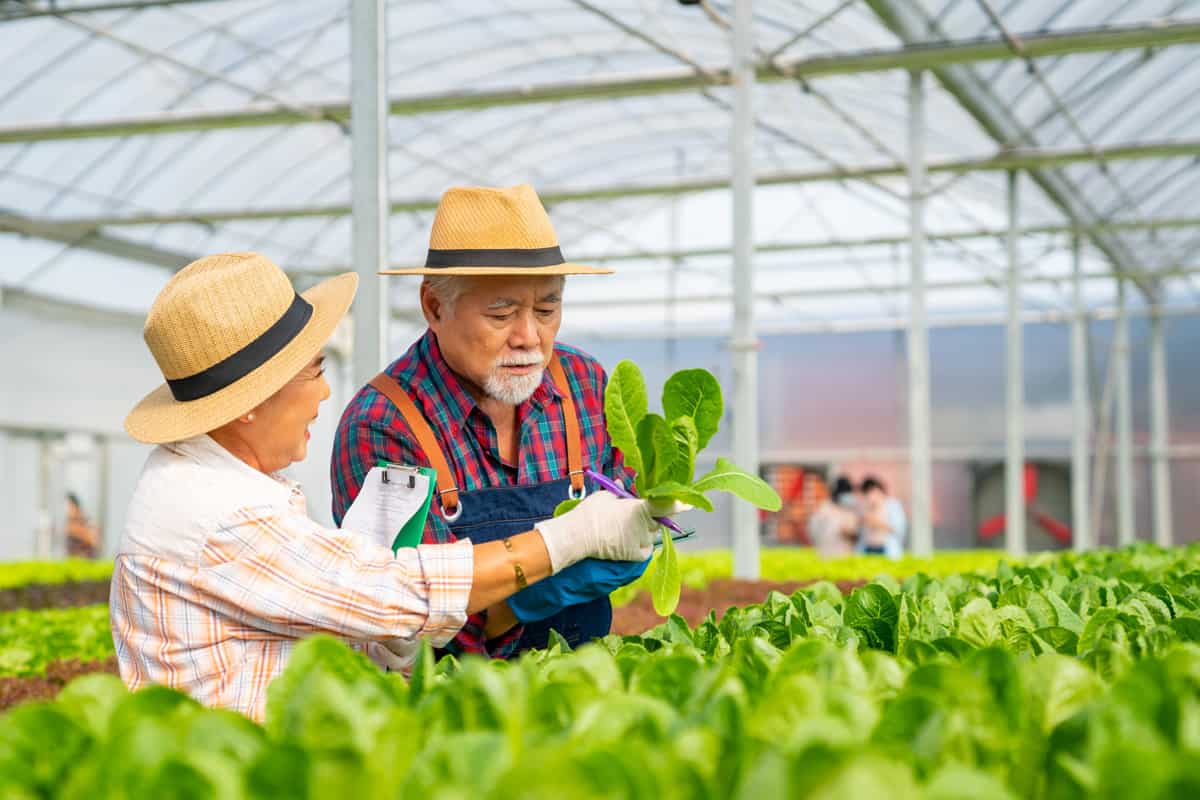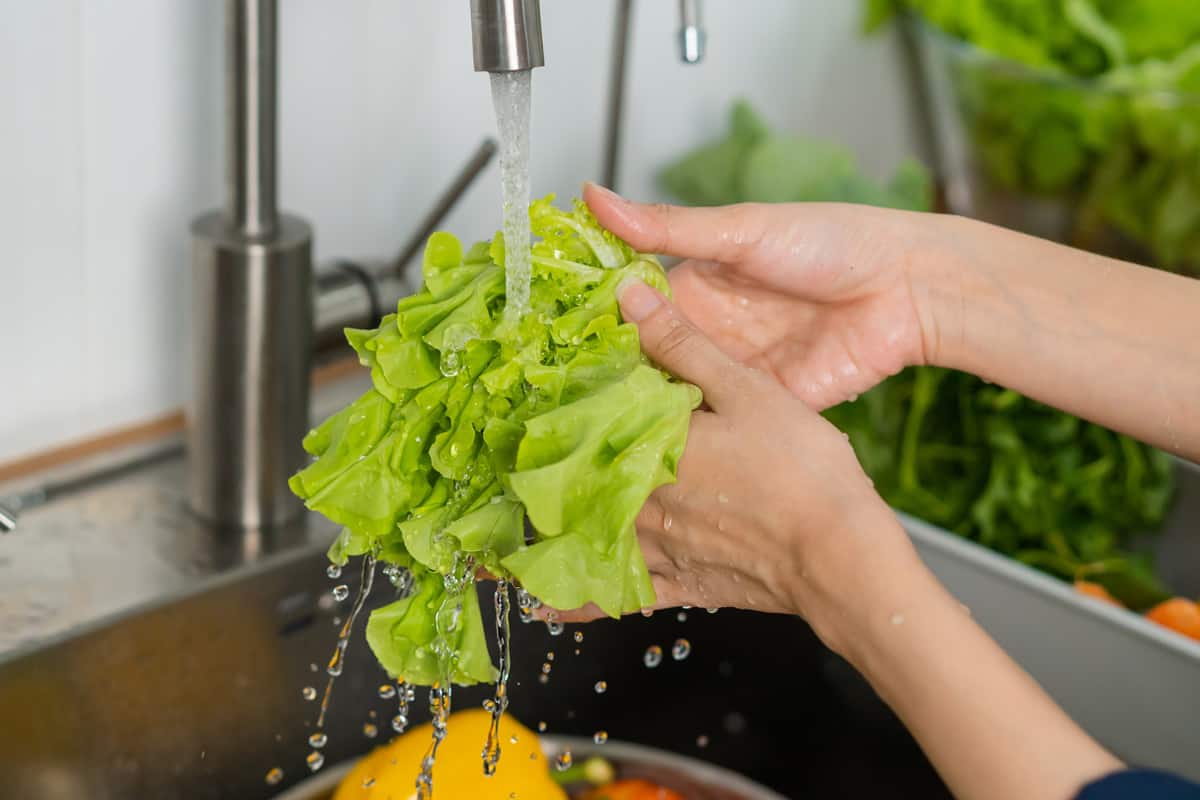Cleanliness is one of the most essential characteristics of hydroponics. Plants grow faster and stay healthy in a clean environment. But how can you keep the water in a hydroponic system clean?
If you're looking for answers, you're on the right page! We'll teach you the basic steps to maintain it clean and help you answer the frequently asked questions! Have fun!
To maintain the hydroponic water clean, follow these steps:
- Remove all other plants from the system.
- Clean the growing area.
- Drain the water from the system.
- Collect cleaning supplies.
- Soak and separate smaller ones.
- Start scrubbing the basin.
- Perform a wash cycle.
- Fill them with water.
- Give it time to dry.
Read the rest of the post for more details. We will teach you more about hydroponic water and its benefits. We will also answer any other questions related to this post. Happy reading!
![Water flows out of the hydroponic pipe into the reservoir. Hydroponic plumbing system, How To Keep Hydroponic Water Clean [Step By Step Guide]](https://gardentabs.com/wp-content/uploads/2022/10/21.-How-To-Keep-Hydroponic-Water-Clean-Step-By-Step-Guide.jpg)
Importance Of Keeping Hydroponic Clean

A hydroponic system is used as a growing medium to support the plant roots and improve the water uptake of the root structure. Coconut coir, a ground fibrous material made from coconut shells, is a typical form of growing medium.
Keeping your hydroponic system clean reduces the risk of disease, fungi, and bacteria. Every individual's health who will consume the product is the most compelling justification for cleaning grow rooms.
The most important thing in doing these things is to protect human health. Another thing is that plants would suffer as a result of your predator-free habitat.
If you do not regularly clean and sterilize your system, bugs, algae, fungus, mold, mildew, and bacteria will soon overwhelm you.
Step By Step Process Of Cleaning Hydroponic Water
These are the following steps in cleaning hydroponic water:
Step 1: Remove All Other Plants From The System
You can have a hydroponic system that needs cleaning while other plants are still developing since plants grow at various speeds. Move dirty equipment to another room to prevent chemicals from sticking to live plants or tanks.
Place a healthy plant somewhere in a system that contains many types of plants so that you can start cleaning the system. This can also occur if some plants have had to be removed from the garden to prevent the disease from spreading to other plants.
Step 2: Clean The Growing Area
Make sure your workplace is clean. If you clean all your grow room equipment at once, use that time to thoroughly clean the area and create a healthier environment for your plants.
For your safety and to prevent pests and fungi, do not leave puddles of water or soap on the floor. Let's remove dust in places you can't usually think of.
Bacteria can accumulate over time in places such as dirty grow lights, especially if they are free of dust. Make sure the room where you clean the equipment is sterile, even if it's not the grow room.
Cleaning gear in a dirty environment compromises sterility by attracting dust and bugs to the gear after the job is done. Cleaning your hydroponics equipment outdoors can contaminate it with insects and diseases.
Step 3: Drain The Water From The System
The next step is to drain the contents of the pool. Remove any shallow layer of solution that appears on either the bottom of the tank or the container. Use a sponge to soak up the solution, or use a wet or dry vacuum to soak it up.
Step 4: Collect Cleaning Supplies
Before you begin, ensure you have the necessary cleaning supplies.
- Rubber gloves
- Mask
- Scrub sponges
- Bottlebrush
- Cleaning cloth
- Bucket
- Water source
- Vinegar or food-grade hydrogen peroxide

Check out these disposable gloves on Amazon.
Face Mask

Check out these disposable masks on Amazon.

Check out this bottle brush on Amazon.
Never combine chemicals. Read the labels on all cleaning supplies you use. Unscented hydrogen peroxide bleach can be used but requires a higher dilution to be used as a cleanser and requires three rinses before use.
Food-grade hydrogen peroxide has a higher solution concentration than hydrogen peroxide used to heal wounds. Protective gloves should be worn when handling food-grade hydrogen peroxide.

Check out this food-grade hydrogen peroxide on Amazon.
Step 5: Soak And Separate Smaller Ones
Disassemble the smallest components of your hydroponic system and place them in water and a food-grade hydrogen peroxide solution. Add 3% of hydrogen peroxide to 1 gallon of water.
Set these aside while you start working on your hydroponic system. Remember that you can reuse the Rockwool growing medium in your hydroponic garden by soaking it in a similar tub.
Step 6: Start Scrubbing The Basin
Fill one of the empties buckets with a solution containing 1 gallon of water for every 3% hydrogen peroxide, as you did with the diluted hydrogen peroxide bath. Scrub the basin from top to bottom with a sponge or scrubbing brush soaked in the solution.
Keep the side walls of the pool free of minerals and table salt. If your system has a small brush, scrub each bin with a small brush. Small hydroponic components should also be scrubbed with a towel at this stage and dried gently.
Step 7: Perform A Wash Cycle
After the initial scrub, wash away the minerals and debris collected at the pool's bottom. Next, add more of the used hydrogen peroxide and water solution to the basin than usual. Set up your hydroponics system and let it run for a few hours.
Step 8: Fill Them With Water
After a few hours, turn off the device and drain the solution. Fill the basin with clean water and flush again to remove the residual hydrogen peroxide mixture and minerals.
To avoid flushing the system with the same solution over and over again, drain the basin and refill it with fresh water after each complete cycle. Flush the system three times and drain again.
Step 9: Give It Time To Dry
Let it dry completely before using it again. Dry all areas as best you can with a clean cloth or towel. Do not leave puddles in pools or containers. Bacteria can take hold and ruin your plants.
Bring a fan and turn on the grow lights to speed up the drying process and minimize standing water. Once it's dry, you can start growing again. Even if you produce the same crop, you should clean your system after each growing cycle.
Benefits Of Hydroponics

These are the benefits offered:
1. Plant Yield Improvement
Hydroponic plants produce more fruit and vegetables because they are packed more densely in a hydroponic system than the amount of land required to grow the same number of plants.
Moreover, many of the parameters that drive plant development in a hydroponic system can be better controlled, such as pH water level, water nutrient content, and amount and type of light.
2. Use Less Water
Hydroponic systems use up to ten times less water than typical crop irrigation methods because the water is recovered and reused instead of being drained and released into the environment.
3. Grown Locally
Plants can grow almost anywhere in an indoor hydroponic system year-round.
4. Reduced Space
There are various types of hydroponic systems, including compact vertical stack systems.
How Is Hydroponic Water Purified?
Reverse Osmosis, also known as "RO," is the process of pressurizing water through a semi-permeable membrane while removing unwanted minerals, contaminants, and chlorine.
Reverse Osmosis is the best way to remove contaminants and Total Dissolved Solids from your water supply.
How Often Do You Change The Water In Hydroponics?

The best time to completely change the water in hydroponics is when you have replenished enough times to keep the water tank full. An average-sized hydroponic system should change the water every 2-3 weeks.
However, for smaller hydroponics pots, the time intervals are shorter.
How To Keep Algae At Bay In Hydroponics?

Prevention is the most effective method. Keeping the solution away from light will prevent algae growth. Close the lid and keep all openings closed. If algae are present in the system, they can be removed with a brush or hydrogen peroxide.
In Closing
Keeping your hydroponic system clean reduces the risk of disease, fungi, and bacteria. In a clean environment, plants grow faster and stay healthy. One of the most important elements of proper maintenance is keeping your hydroponic system clean.
Besides feeding the plants, you must ensure that all other elements are in good condition. We hope this post helped you in answering your question. Before you go, check out these other posts to learn more:
How To Get Rid Of Moss In Your Lawn
Does Perlite Aerate Soil And Absorb Water?
![How To Keep Hydroponic Water Clean [Step By Step Guide]](https://gardentabs.com/wp-content/uploads/2024/02/How-To-Keep-Hydroponic-Water-Clean-Step-By-Step-Guide.jpg)
